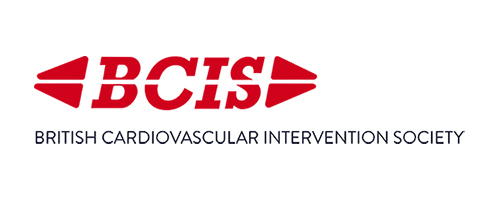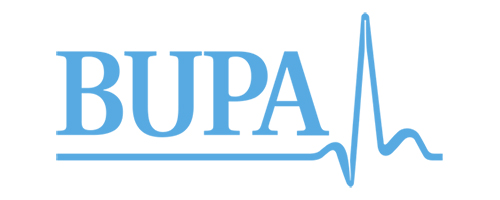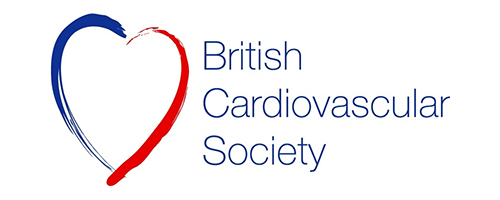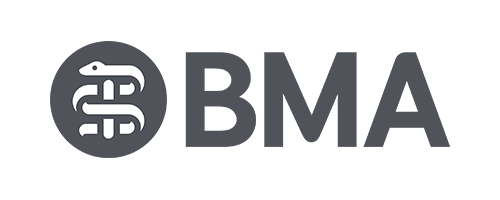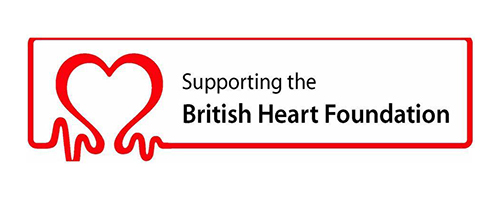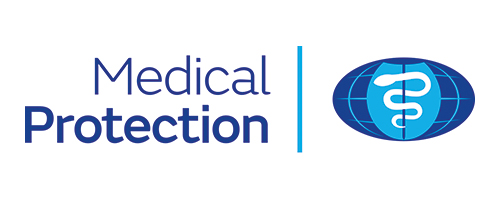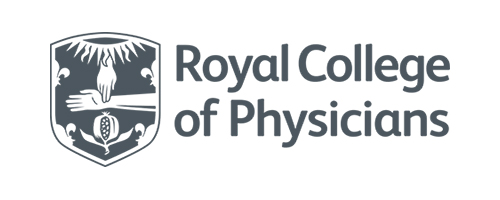The information outlined below on common conditions and treatments is provided as a guide only and it is not intended to be comprehensive.
Discussion with Dr Saha is important to answer any questions that you may have. For information about any additional conditions not featured within the site, please contact us for more information.
The ECG is a very simple and quick test which looks at the electrical activity of the heart over time. It has been used in cardiology for many years and is a fundamental part of assessing the rhythm of the heart. The ECG provides a very short snapshot, about 10 seconds of the hearts rhythm and typically records 12 “leads” of activity from different areas of the body.
What happens during an ECG
If an ECG is requested you will be given a gown and asked to undress to the waist. Sticker or electrodes will then be attached across the chest and limbs. Wires or leads will be attached to the electrodes and a machine will then record the ECG. You will not feel anything during the ECG.
A probe is placed on the chest wall and an inaudible ultrasound beam passes out from the probe, reflects back from the structures within the heart and allows the cardiologist to build up an accurate image of the heart. A variety of views are taken to look at the heart structures. When these views are completed, a Doppler analysis is performed to analyse blood flow from chamber to chamber and across valves. More specialised analyses can be done looking at particular areas of the heart muscle, it’s movement and its relaxation. The whole procedure takes about 30 minutes and is non invasive.
What happens during an Echocardiogram
If an echocardiogram is requested you will be given a gown and asked to undress to the waist. Stickers or electrodes will then be attached across the chest and wires or leads will be attached to the electrodes. A probe will be placed on your chest in various positions to acquire images of the heart. Sometimes this can be a little uncomfortable but it will not be painful.You may hear Doppler sounds from the Echo machine as your heart beats. The procedure takes around 30 minutes.
What happens after
After your echocardiogram the images will be transferred to our electronic archive where a report will be written. Dr Scott will discuss the results of the echocardiogram during your consultation.
The test measures your blood pressure at different times over a 24-hour period.
An inflatable cuff is secured around your upper arm and connected to a small monitoring device worn around your waist. The cuff will inflate and deflate at regular intervals over a 24-hour period to measure and record your blood pressure. You do not need to stay in hospital and you can continue with your normal daily activities during the test.
Why do I need a 24-hour blood pressure monitor test?
It is normal for blood pressure to change during the day because of anxiety, diet, exercise, sleep or any blood pressure medication you may take. As a result, taking a single blood pressure measurement in the clinic is not always a very accurate way of checking your blood pressure.
The test will give your doctor more detailed information about your blood pressure during your daily life.
How is the monitor fitted?
It is a good idea to wear a loose-fitting top or shirt to your appointment as this makes it easier to fit the monitor. We will fit the inflatable cuff on the arm of your choice. It should sit comfortably around your arm so please reposition it if needed. If the cuff moves during the monitoring period, the results may not be accurate. The cuff is connected to a small monitor, which you will wear around your waist clipped into a belt or waistband. It takes about 10 minutes to fit the cuff and monitor.
Results
You will be asked to return the monitor to us, ideally the following day. There is a short turnaround time while we analyse the results, after which we will contact you to either go through the results in person, or provide you a written summary.
What happens during an ETT
The exercise test (or “stress test”) is conducted in a closely supervised situation. You will be attached to the ECG recording monitor just as you were for the resting ECG. You will then stand on a treadmill, which will begin to move very slowly. Progressively, as you become accustomed to the pace, the workload will be increased. All the time, we will be monitoring your heart rate, blood pressure and looking carefully at the ECG for any changes. You will be asked to report any chest pain/tightness during the test.
What happens after
You will be allowed to recover whilst we monitor the ECG and when your heart rate and blood pressure have returned to normal, the test is completed. The cardiologist will review and analyse your exercise test and if the characteristic features of changing within the ECG are present, this is a strong indication of Coronary artery disease. The effect of exercise on the blood pressure is also useful to monitor and can guide therapy.
Having an Angiogram
This procedure is undertaken in either Cheltenham General Hospital or one of our partner facilities. You will need to fast for a least 4 hours for your procedure. You will be admitted to hospital. The nurses will take some details from you, check for any potential issues such as previous allergic reactions, drugs in the past, check the medication you are taking. When you have signed the consent form, you will be taken down to the cardiac catheterisation laboratory.
The procedure is nearly always done from the wrist (the radial artery) but may require access via the leg in some patients (the femoral artery). In the Catheterisation Laboratory, the doctor will place a local anaesthetic at the puncture site. Simple sedation is always offered to make the procedure more tolerable for you. When the skin has been anaesthetised, the doctor will insert a tiny plastic tube (the sheath) into the artery. Through this sheath, we will conduct the procedure.
Specially shaped catheters allow the the coronary arteries to be engaged. A special dye is injected through the catheter and x-ray pictures are taken. This allows the doctor and his team to see any narrowings or blockages. The whole procedure takes about 10-15 minutes.
As it is an invasive test, there is a very small risk of complications. These include bruising and bleeding from the artery puncture point, or internal bleeding, but very rarely can include setting off a heart attack or stroke. Death from an angiogram is very rare.
What Happens after
When the cardiologist has gathered all the data that is required, the tube will be removed from the arm or leg. If done from the wrist, you can sit up immediately, with a wrist band compressing the puncture site. If done via the leg, more often than not, a special sealing device will often be placed at the top of the leg, in the form of a tiny plug, which seals off the puncture site of the artery and prevents any further bleeding. You will be able to sit up and have a drink almost immediately and mobilise within 2 hours. Thereafter, someone may escort you home later that day. The vast majority of patients can go home a few hours after the procedure.
Patch tests
These new devices are small, unobtrusive, simple to apply, and easy to remove. They allow heart rhythms to be monitored for up to two weeks. Your cardiologist will apply the device just under your left collarbone, or over the breastbone, by gently pressing the adhesive layer to your skin. They can be worn in the shower, and allow all normal physical activities to take place. After the monitoring period is completed, we ask that you simply peel the device away from your skin, and return it in the provided prepaid box which you post in a normal mailbox. This is then received by an analysis centre in the UK which allows cardiac analysts to create a detailed report.This is then analysed and interpreted by your cardiologist.
What happens during a Holter monitor test
The Holter monitor is the size of a mobile phone and attaches to your chest via three leads. The monitor can sit in your pocket hang around your neck. You will be asked to keep a diary of any symptoms you experience during the recording period. The recording is designed to sample you normal active daily living so you will be encouraged to go about your normal routine. It can be removed to shower, and you will be shown how to put it back on.
What happens after
The Holter monitor records all of your heart beats in every 24 hours, over 115,000 if your average rate is 80 bpm. It takes a little while to go through this data to establish if the rhythm is normal. A report will be produced and your cardiologist will explain the findings to you.
What happens during a Bubble Echo
A normal transthoracic Echocardiogram is performed. A small needle (cannula) will be placed into the vein on the back of the hand or in the forearm. Some sterile saline will then be drawn up into a syringe and mixed with your own blood so that microscopic bubbles are formed in the solution. These are then injected briskly into the vein, whilst the imaging takes place. The right side of the heart (connected to the veins) is highlighted very well, as the microbubbles show very brightly on the Echocardiogram. You may be asked to strain to encourage bubbles to go across.
What happens after
No bubbles should be seen on the far side of the heart. However, if a significant number of bubbles do appear on the left side of the heart, this suggests the presence of a hole in the heart. Your cardiologist may then consider further tests and make decisions about whether closing the defect with a device is appropriate.
When the tracer is injected into the blood stream it travels to the heart muscle through the coronary arteries. The process can be visualized by a special camera. The test has better sensitivity and specificity than an exercise treadmill test (ETT ) for detecting coronary artery disease.
What happens during an MPS
This procedure is undertaken in one of our partner facilities (usually at Cheltenham or Gloucester). The test occurs in two parts, rest and stress. You will be given the radioactive tracer only in e “rest” part of the scan. The tracer will be injected through a vein. You will then be asked to lie flat on a imaging table whilst a special camera circles slowly around your chest for about 30 minutes.
During the “stress” part of the scan, before the radioactive tracer is given, you will receive another drug into the blood stream which makes the heart behave as if you are exercising (“stress”). The most commonly used drug is adenosine, which sometimes causes very short lived symptoms of chest pain and shortness of breath. It can also make your heart slow down. If you have severe asthma we sometimes use an alternative drug. After this “stress” we give you the radioactive drug, just as we did for the “rest” part of the scan,
What Happens after
After your MPS your images will be analysed and the results forwarded to your cardiologist. If large areas of heart disease are found it is likely that you will need an angiogram.
Having an MRI
This procedure is undertaken in one of our partner facilities in Oxford or Bristol. This involves lying flat on your back and passing into a large circular magnet. It does not use X-rays, and a special dye needs to be injected via a small needle in the back of your hand. You may need to hold your breath, and the procedure can be a little claustrophobic.
If we are interested in determining whether the blood supply to the heart is adequate, we sometimes use a drug called adenosine, which causes very short lived symptoms of chest pain and shortness of breath. It can also make your heart slow down. When we use this drug the test is called a “Stress cardiac MRI” or “Stress CMRI” scan.The result of this scan informs the need for a further test- a coronary angiogram.
What Happens after
Once the images have been processed and the specialist has formed the report your cardiologist will tell you the result to you along with any recommendations for treatment.
After placing the catheter in the heart artery, a very thin wire is passed through the blockage or narrowing in the heart artery, Over this wire the consultant can open the artery using a variety of balloons and stents (mesh-like scaffolds to keep the artery open).
Do I need Coronary Angioplasty?
It is necessary to demonstrate the presence of narrowing’s in the coronary arteries before performing angioplasty. This is usually done either by CT angiography or coronary angiography. Angioplasty is very effective in treating unstable angina and treating patients having a heart attack.
What is involved and what are the risks?
A special tube (catheter) is passed up the femoral (groin) or more commonly the radial (wrist) artery and positioned in the coronary artery that is narrowed. Through this catheter , a very fine wire is navigated across the narrowing. When the wire tip is safely positioned at the far end of the artery, a tiny balloon is slid over the steel wire. When this balloon is in the position of the narrowing artery, it is inflated to high pressure using a special hydraulic inflation device. The pressure delivered to the balloon is transmitted to the arterial wall. The pressure cracks and stretches the plaque of cholesterol. The Cardiologist will usually decide to deploy a stent. If the narrowing is very tough, a drill (Rotablator ) may be needed prior to stent.
Once the coronary artery has been successfully treated, the access pipe in the wrist or leg is removed and the hole closed by pressure or a plug. Sometimes we keep patients in overnight and repeat an Electrocardiogram and a blood test the following morning. If there are no complications, you will be allowed home the same day.
The risks of Angioplasty are broadly similar to those of Coronary Angiography, however, there are more specific risks associated with the Angioplasty procedure itself. These tend to be damage to the coronary artery wall, the provocation of a heart rhythm disturbance or damage to the artery such that the patient may require a bypass operation. This tends to occur in less than 1:100 patients treated.
Do I need a Pacemaker?
The heart normally has a regular heartbeat, generated by its own internal pacemaker system (see heart pacemaker system). On occasion, this can be affected either by progressive fibrosis and degeneration in old age, or following other conditions, such as aortic valve disease or following aortic valve surgery. Certain individuals are born without a normal working heart pacemaker. Either way, this “heart block” can present in a number of ways. In these situations, patients benefit both in terms of their symptoms and may improve life expectancy, with the implantation of a permanent pacemaker.
What is involved and what are the risks?
If your cardiologist decides that you require a permanent pacemaker, you will be admitted to hospital for a day and a night. This usually occurs at Cheltenham General. You will be taken down to the operating theatre, where your skin will be cleaned with a sterile solution. You need to let the cardiologist know if you are left or right handed as this will decide which side the pacemaker is placed.
You will be covered with sterile surgical drapes, leaving a small window over the shoulder by the collarbone, where the pacemaker will be implanted. The cardiologist will freeze the skin and underlying tissues with a local anaesthetic solution. He will make a small incision (about 3 centimetres), just below the collar bone. This will allow him to gain access to the veins which lead directly to the heart. He will puncture the vein and using X-ray direction, he will insert the pacemaker leads, one into the apex of the right ventricle and one into the corner of the right atrium. When the leads are positioned, he secures them firmly with sutures and then makes a small pocket under the deep skin structures where he implants the generator (the pacemaker battery). The leads and generator are secured with sutures and then the wound is carefully closed. Afterwards, you are returned to the ward, given antibiotics and have a chest x-ray.
The next morning, you will be reviewed. If the wound is fine, the pacemaker check is satisfactory, and you are well, you will be allowed home. The pacemaker will be interrogated electronically by the cardiac technician on a regular basis to ensure that it is working satisfactorily and that all of the parameters are in their optimal setting. Each person’s pacemaker is tailored to their own requirement in terms of their activity, age and particular underlying conditions.
A pacemaker generator typically lasts 5-7 years, depending on how much the pacemaker is activated. We can tell when the pacemaker battery begins to run low, when we interrogate the device with the computer on a 6-monthly or annual basis.
Pacemaker insertion is safe. However, like any surgical procedure, there is a small degree of risk: puncturing the lung or heart tissue, infection and bleeding around the wound site, and occasionally displacement of the pacemaker leads.
IVUS is rarely done alone or as a strictly diagnostic procedure. It is usually done at the same time that a percutaneous coronary intervention, such as angioplasty, is being performed.
How does it work?
IVUS uses high-frequency sound waves (also called ultrasound) that can provide a moving picture of the inside of the heart arteries. The pictures come from inside the heart rather than through the chest wall. The sound waves are sent with a device called a transducer. The transducer is attached to the end of a catheter, which is threaded through an artery and into your heart. The sound waves bounce off of the walls of the artery and return to the transducer as echoes. The echoes are converted into images on a television monitor to produce a picture of your coronary arteries.
During coronary angiography, a catheter is inserted into an artery in the groin or wrist using a sheath and a guide wire. A pressure wire is a special guide wire which has a small sensor at its tip which measures blood flow and blood pressure.
The doctor positions the pressure wire beyond the coronary artery stenosis. Pressures are then recorded across the artery. A drug (adenosine) may be given to ensure the readings obtained are as accurate as possible. This drug causes very short-lived symptoms of chest pain and shortness of breath, and is the same drug used for MPS scans and Stress CMRI scans.
The doctor can then decide if treating the narrowing with coronary angioplasty (balloons and stents) is suitable for the patient and what further treatment may be required.
After placing a heart catheter from the wrist or groin, under a local anaesthetic, a wire is placed through the narrowing in the heart artery. We then pass a tiny drill over the wire. This drill is coated with tiny fragments of diamond. It is powered by compressed air and when activated, spins at approximately 160,000 rpm. This drill is used to chip away at the plaque to gradually widen the narrowing. The fragments of plaque produced are so small that they are simply absorbed by the body’s immune system (reticuloendothelial system). Once complete, a balloon can be inserted and the angioplasty can proceed as normal.
Our patients are typically awake for the procedure, although we always offer simple sedation. Although the drill procedure is not painful, as with an angioplasty, you may feel some minor chest discomfort.
Discussion with Dr Saha is important to answer any questions that you may have. For information about any additional symptoms you may be suffering from that are not featured within the site, please contact us for more information.


